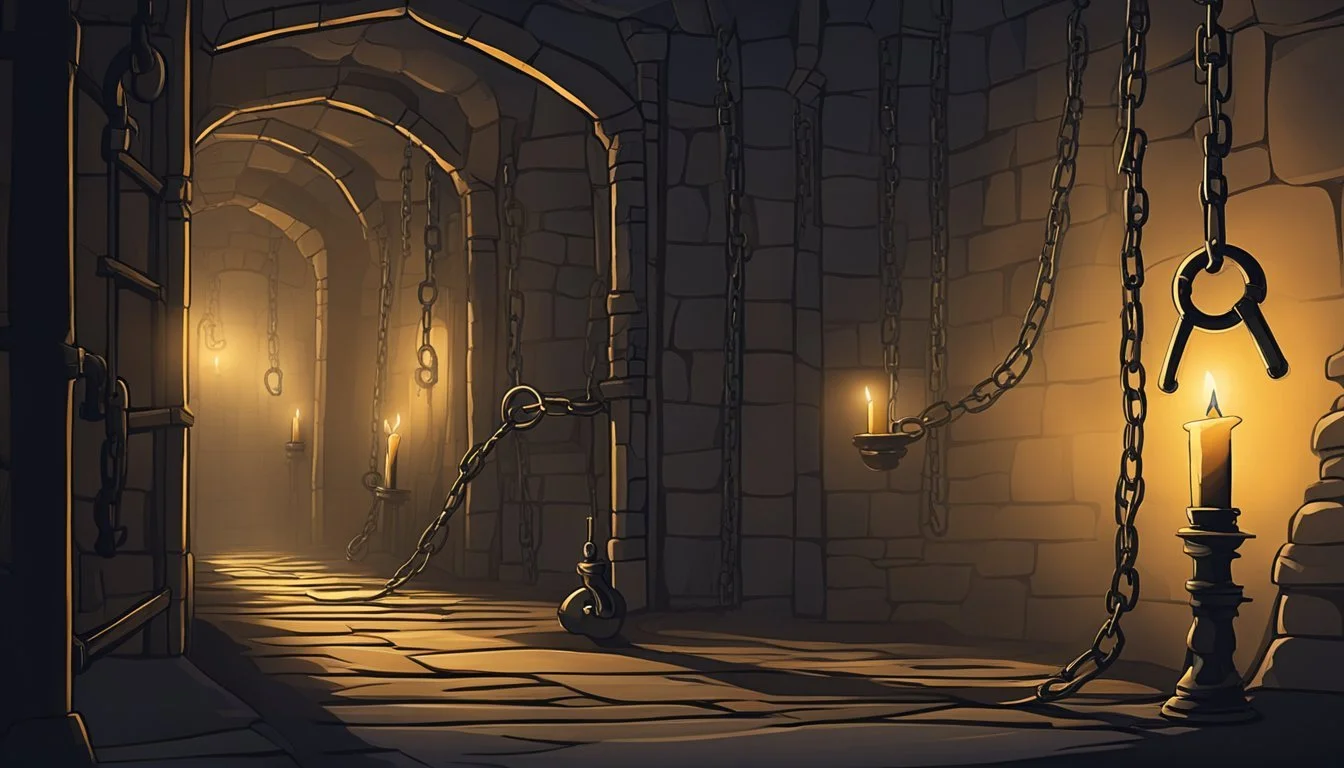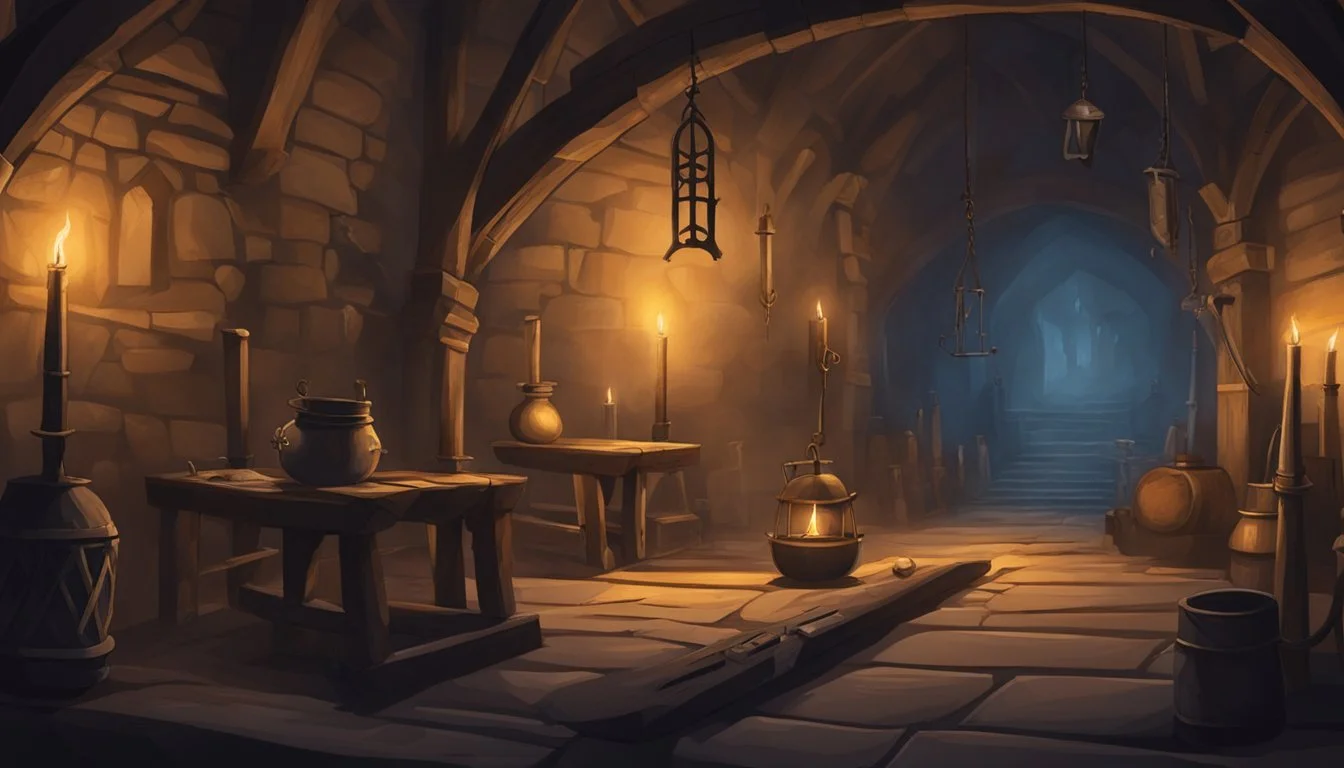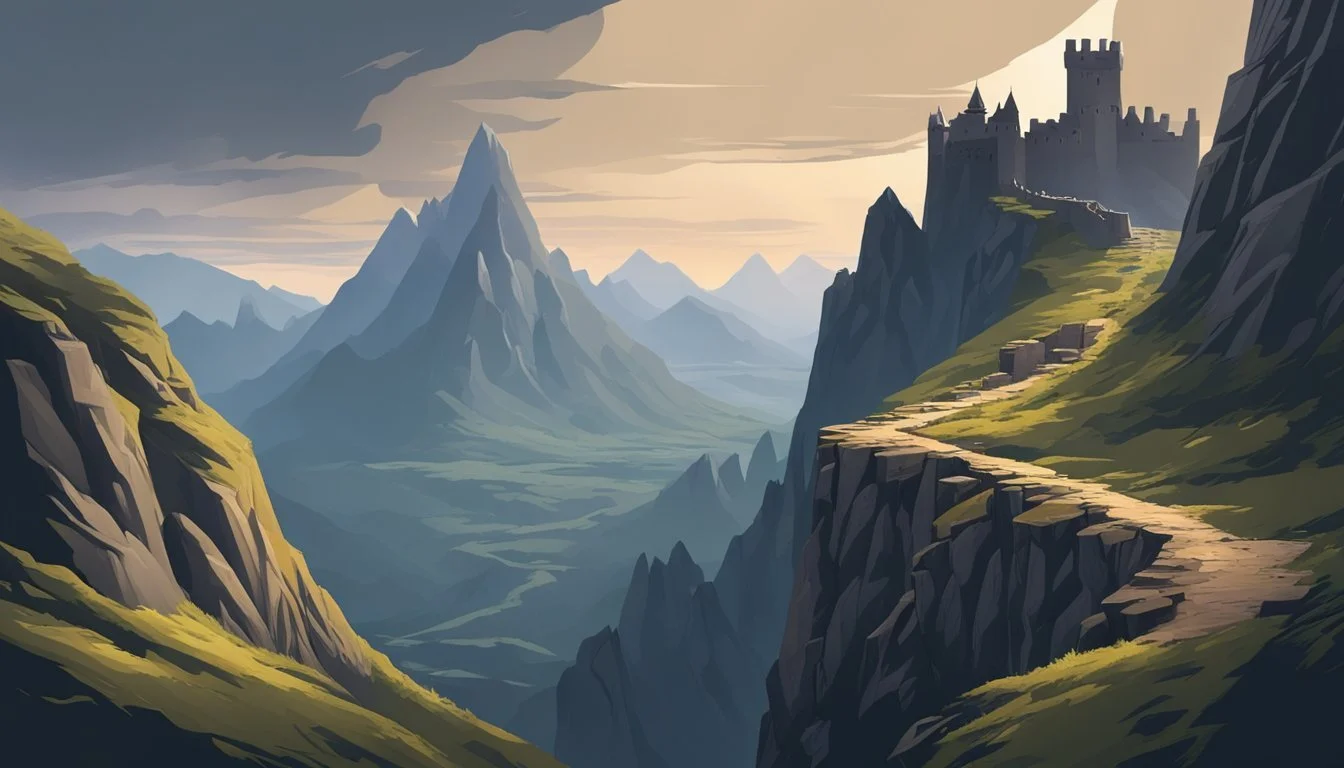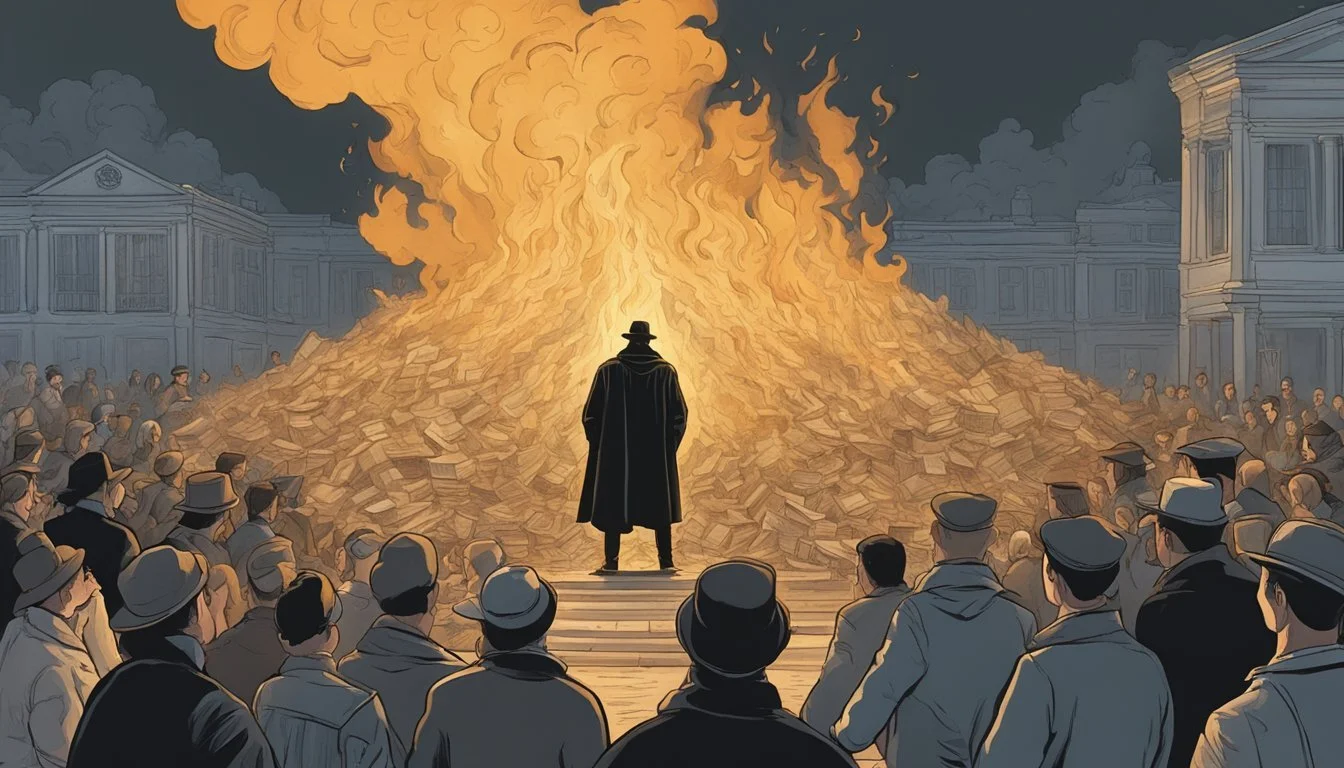5 Eye-Opening Films on the Spanish Inquisition
Unveiling Historical Truths
The Spanish Inquisition remains one of the most infamous periods in European history. For centuries, it has captured the imagination of historians, artists, and filmmakers alike. The complex mix of religious fervor, political intrigue, and human suffering provides rich material for cinematic exploration.
Several notable films have tackled the subject of the Spanish Inquisition, offering viewers unique perspectives on this dark chapter of history. These movies range from historical dramas to more fantastical interpretations, each shedding light on different aspects of the Inquisition's impact. Through powerful storytelling and vivid imagery, they bring this distant era to life for modern audiences.
1) The Pit and the Pendulum
"The Pit and the Pendulum" is a notable film adaptation of Edgar Allan Poe's short story, set against the backdrop of the Spanish Inquisition. The 1991 version, directed by Stuart Gordon, brings the horrors of this historical period to life on screen.
Lance Henriksen delivers a chilling performance as Torquemada, the Grand Inquisitor. His portrayal captures the zealous cruelty of the Inquisition's leaders, adding depth to the film's exploration of religious persecution.
The movie centers on Maria, a baker's wife unjustly accused of witchcraft. Her plight serves as a window into the arbitrary nature of accusations during this dark period in history. The film vividly depicts the torture methods employed by the Inquisition, including the titular pit and pendulum.
While taking some liberties with historical accuracy, the film effectively conveys the atmosphere of fear and oppression that characterized the Spanish Inquisition. It blends elements of horror with historical drama, creating a visceral viewing experience.
"The Pit and the Pendulum" stands out for its ability to balance Poe's gothic sensibilities with the real-life terrors of the Inquisition. It serves as both an entertaining thriller and a stark reminder of a brutal chapter in European history.
2) Inquisición by Paul Naschy
Paul Naschy's 1976 film Inquisición marks his directorial debut and stands out among Spanish Inquisition-themed horror movies. The film blends historical elements with supernatural horror, setting it apart from other entries in the genre.
Naschy himself stars as a witch-finder general who falls for a village beauty accused of making a demonic pact. This love story serves as the central conflict, adding emotional depth to the historical setting.
The movie features elaborate special effects by Fernando Florido, particularly in scenes depicting supernatural elements. These visuals contribute to the film's unique take on the Inquisition period.
Inquisición showcases Naschy's multifaceted talents as writer, director, and actor. He portrays three different roles in the film, demonstrating his versatility as a performer.
While released in Spain in 1978, Inquisición has since gained recognition among horror enthusiasts. Modern releases include audio commentaries and introductions by Naschy himself, providing insight into the film's production and significance.
3) Goya's Ghosts
Goya's Ghosts is a 2006 biographical drama directed by Miloš Forman. The film stars Javier Bardem, Natalie Portman, and Stellan Skarsgård, with the story set against the backdrop of the Spanish Inquisition.
The movie intertwines the life of renowned painter Francisco Goya with fictional characters caught in the turmoil of late 18th-century Spain. It explores themes of religious persecution, political upheaval, and artistic expression during this tumultuous period.
Forman's film is visually stunning, drawing inspiration from Goya's artwork to create a rich, atmospheric portrayal of the era. The cinematography captures the darkness and brutality of the Inquisition, as well as the beauty of Goya's paintings.
While Goya serves as a witness to the events unfolding around him, the narrative focuses on the fictional characters of Brother Lorenzo, an ambitious cleric, and Inés, a young woman accused of heresy. Their stories unfold against the backdrop of historical events, including Napoleon's invasion of Spain.
Goya's Ghosts offers a unique perspective on the Spanish Inquisition by examining its impact on individuals and society through the eyes of an artist. The film's exploration of religious intolerance and political corruption provides a thought-provoking look at this dark period in history.
4) The Name of the Rose
"The Name of the Rose" is a 1986 film directed by Jean-Jacques Annaud, based on Umberto Eco's novel. Set in a 14th-century Italian monastery, it blends elements of historical drama and murder mystery.
Sean Connery stars as William of Baskerville, a Franciscan friar tasked with solving a series of mysterious deaths at the abbey. Christian Slater portrays his young apprentice, Adso of Melk.
The film explores themes of religious orthodoxy, intellectual freedom, and the clash between faith and reason. It vividly depicts the atmosphere of medieval monasticism and the looming threat of inquisitorial persecution.
While not directly about the Spanish Inquisition, "The Name of the Rose" offers insights into the broader context of religious authority and dissent in medieval Europe. It illustrates the power of the Church and the dangers faced by those who questioned established doctrines.
The movie's intricate plot and attention to historical detail provide viewers with a compelling glimpse into the complexities of medieval religious life and the intellectual climate that preceded the Inquisition.
5) The Devil's Backbone
"The Devil's Backbone" is a gothic horror film directed by Guillermo del Toro, set in Spain during the final year of the Spanish Civil War in 1939. While not directly about the Spanish Inquisition, the film explores themes of oppression and violence that echo that historical period.
The story takes place in an orphanage run by Republican loyalists. It follows a young boy who encounters the ghost of a recently deceased child. The film's backdrop of war and conflict creates a tense atmosphere reminiscent of earlier periods of Spanish history.
Del Toro's masterful storytelling weaves together supernatural elements with the harsh realities of war. The orphanage serves as a microcosm for the larger societal struggles, mirroring the fear and uncertainty prevalent during the Inquisition era.
Though set in a different time period, "The Devil's Backbone" offers insights into the lasting impacts of religious and political turmoil on Spanish society. It showcases del Toro's ability to use horror as a lens for examining historical trauma and its lingering effects.
Historical Context of the Spanish Inquisition
The Spanish Inquisition was a powerful institution established by Catholic monarchs to maintain religious orthodoxy. It operated for over 350 years, profoundly impacting Spanish society and leaving a controversial legacy.
Origins and Establishment
The Spanish Inquisition began in 1478 under the reign of Ferdinand II of Aragon and Isabella I of Castile. Pope Sixtus IV authorized its creation through a papal bull. The monarchs aimed to ensure Catholic orthodoxy in their kingdoms, particularly targeting conversos - Jews who had converted to Christianity.
Initially focused on Seville and Cordoba, the Inquisition quickly spread across Spain. It gained autonomy from papal control, becoming a tool of the Spanish crown. The first auto-da-fé, a public ritual of penance and execution, was held in 1481.
Key Figures and Influences
Tomás de Torquemada, a Dominican friar, became the first Grand Inquisitor in 1483. He played a crucial role in shaping the institution's policies and procedures. Torquemada's zeal led to increased prosecutions and the development of strict guidelines for identifying heretics.
King Ferdinand and Queen Isabella were instrumental in empowering the Inquisition. Their 1492 Alhambra Decree expelled Jews from Spain, further intensifying religious persecution. The Inquisition's influence extended to literature, with works deemed heretical being banned or censored.
Pope Sixtus IV initially supported the Inquisition but later expressed concerns about its severity. Despite papal attempts to moderate its actions, the Spanish crown maintained tight control over the institution.
Impact of the Spanish Inquisition on Art and Culture
The Spanish Inquisition profoundly shaped artistic expression and literary works during its reign. Artists and writers grappled with themes of faith, persecution, and morality in their creations.
Literary Responses
Spanish literature reflected the tensions of the Inquisition era. Miguel de Cervantes' masterpiece "Don Quixote" subtly critiqued the institution through satire. The novel's protagonist encounters characters affected by Inquisition policies, highlighting societal divisions.
Poetry also addressed Inquisition themes. Fray Luis de León, imprisoned by the Inquisition, wrote powerful verses about faith and injustice during his confinement. His poem "The Life Withdrawn" expressed longing for spiritual freedom.
Plays like Lope de Vega's "The New World Discovered by Christopher Columbus" incorporated Inquisition elements, reflecting its pervasive influence on Spanish culture and thought.
Artistic Representations
Visual art during the Inquisition period often focused on religious subjects, reinforcing Catholic doctrine. Painters like Francisco de Zurbarán created austere, devotional works that aligned with Inquisition values.
El Greco's distinctive style, with elongated figures and intense spirituality, emerged partly in response to Inquisition pressures. His painting "The Burial of the Count of Orgaz" blended religious fervor with subtle critique.
Diego Velázquez, court painter to Philip IV, depicted Inquisition-era Spain in works like "Las Meninas." While not directly addressing the Inquisition, his paintings captured the complex social hierarchy and tensions of the time.
Modern Interpretations and Relevance
Films about the Spanish Inquisition continue to spark discussions on religious persecution, abuse of power, and historical revisionism. They serve as a lens through which modern audiences can examine complex moral and ethical issues.
Film as a Tool for Historical Reflection
Movies depicting the Spanish Inquisition often challenge viewers to confront uncomfortable truths about the past. These films highlight the dangers of unchecked authority and the consequences of religious extremism.
Some directors use the Inquisition as a backdrop to explore themes of individual freedom and the struggle against oppression. This approach allows audiences to draw parallels with contemporary issues.
Historical accuracy in these films varies, leading to debates among scholars and historians. This discourse encourages viewers to critically examine historical narratives and question established interpretations.
Contemporary Discussions and Debates
Recent films on the Spanish Inquisition have reignited conversations about religious tolerance and the separation of church and state. They prompt audiences to consider how past events shape current societal attitudes.
Filmmakers often use the Inquisition to comment on modern-day persecution and human rights abuses. This approach makes historical events more relatable and relevant to contemporary viewers.
Some movies explore the long-term effects of the Inquisition on Spanish culture and identity. These narratives contribute to ongoing discussions about national history and collective memory.
Debates surrounding these films sometimes touch on issues of historical representation and cultural sensitivity. This dialogue helps refine public understanding of complex historical events.







